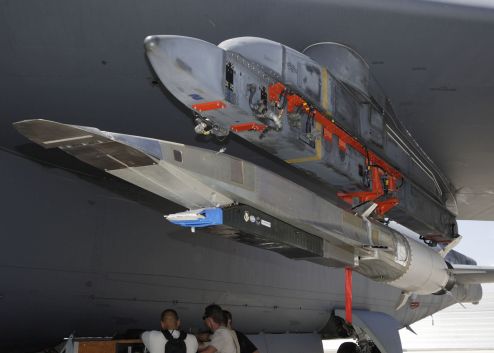| Overview of Scramjets
and Hypersonic Flight |
Introduction
Hypersonic speed is typically defined as velocities exceeding Mach 5 (aprx. 1710 m/s). However many challenges develop at such extreme velocities posing great obstacles for engineers, scientists, and physicists to overcome. One of the foremost of these challenges is the extreme temperature generated by the drag on an object traveling at hypersonic velocities. These temperatures are easily capable of exceeding 260 degrees Celsius, and may cause expansion of the materials which comprise the aircraft. As once stated, "Hypersonics is the study of flight at speeds where aerodynamic heating dominates the physics of the problem" (T.A. Heppenheimer).
Recent History

Image Source:
http://www.af.mil/AboutUs/FactSheets/Display/tabid/224/Article/104467/x-51a-waverider.aspx
In recent decades interest in possible benefits of hypersonic flight for both military and civilian applications has spurred creation of multiple programs dedicated to the exploration of hypersonic flight. The most recent of which was the X-51A Scramjet Demonstrator program, which was conducted jointly by the USAF, DARPA, Pratt & Whitney, and Boeing. The project produced the X-51 WaveRider, an autonomous scramjet powered vehicle intended to operate between Mach 4.5 - 6.5. In its most recent test flight the X-51 was successfully completed what no other air-breathing aircraft had done before, operate at velocities greater than Mach 5, while remaining stable until it had exhausted its fuel supply. On 05/01/2013 the X-51 completed its final flight having cruised over 426 km in just over 6 minutes at speeds reaching mach 5.1. However, before the scramjet could engage the vehicle had to be accelerated using a solid rocket booster to supersonic speeds.
Background
Retrieved From:
http://www.af.mil/AboutUs/FactSheets/Display/tabid/224/Article/104467/x-51a-waverider.aspx
http://www.af.mil/AboutUs/FactSheets/Display/tabid/224/Article/104467/x-51a-waverider.aspx